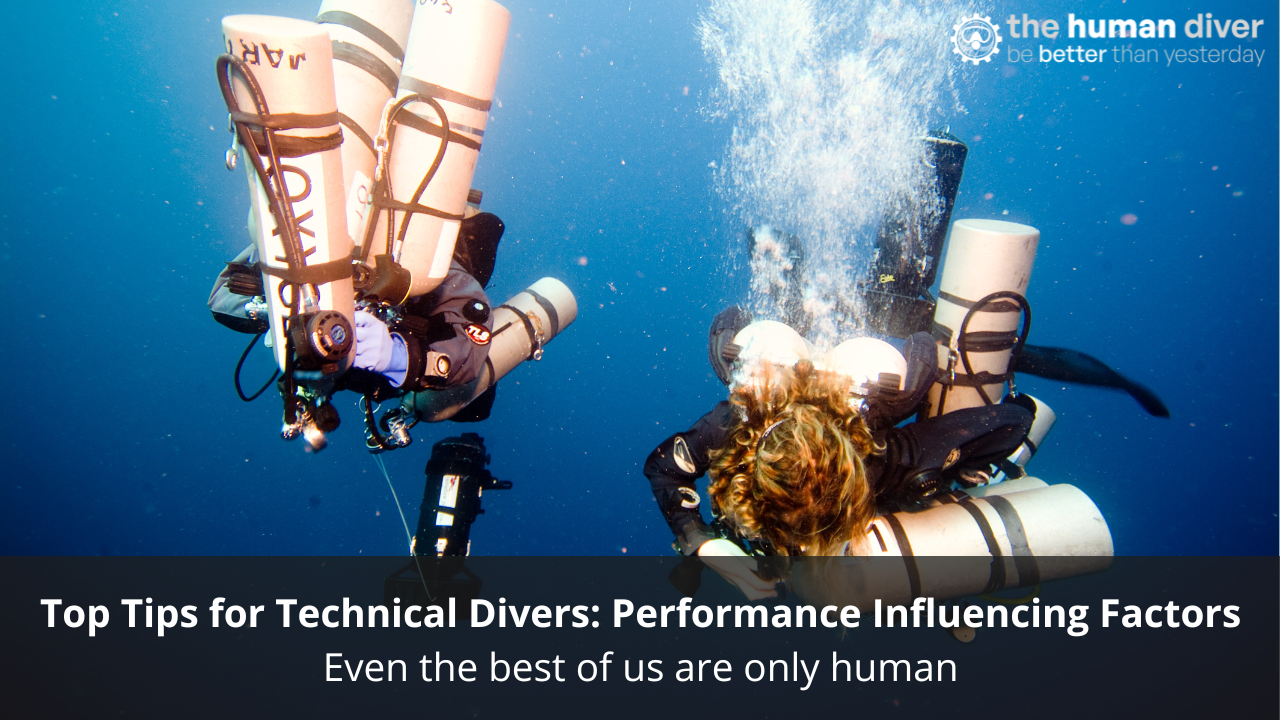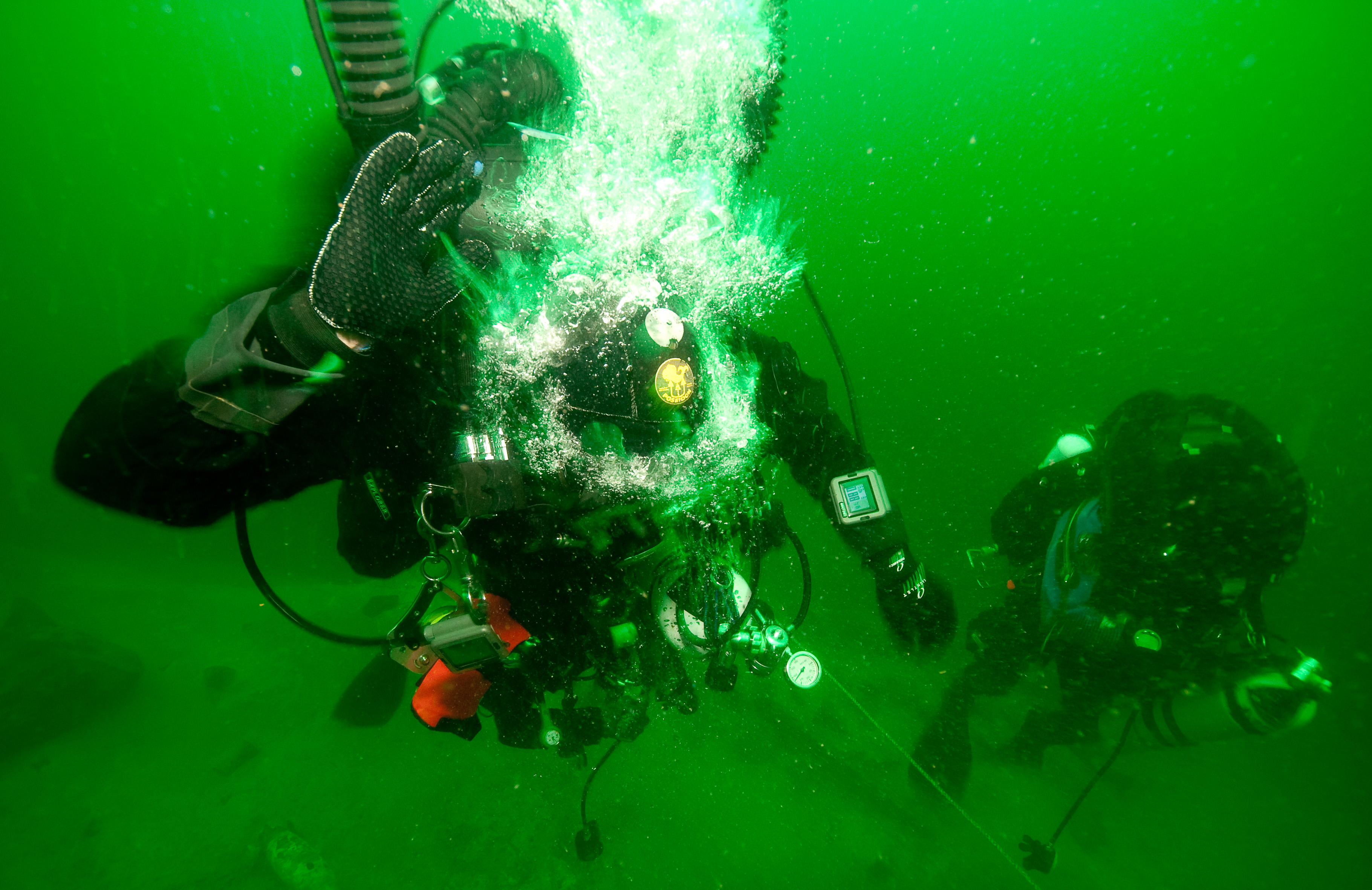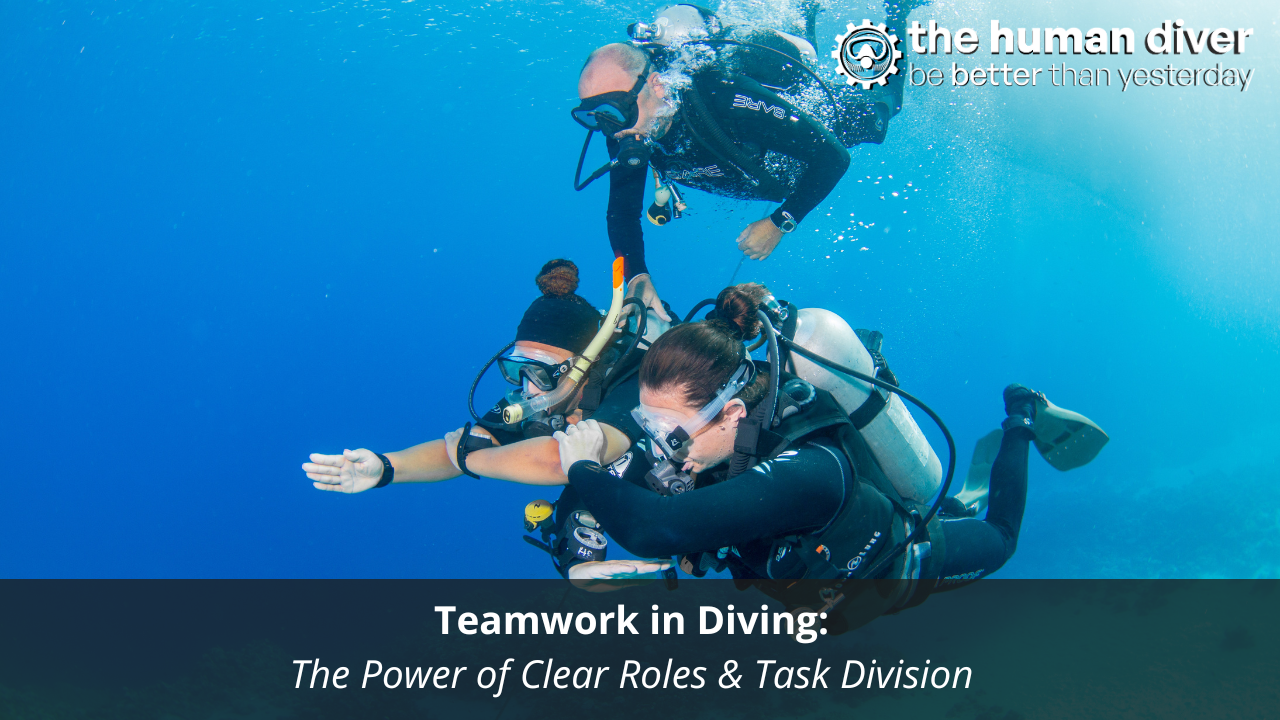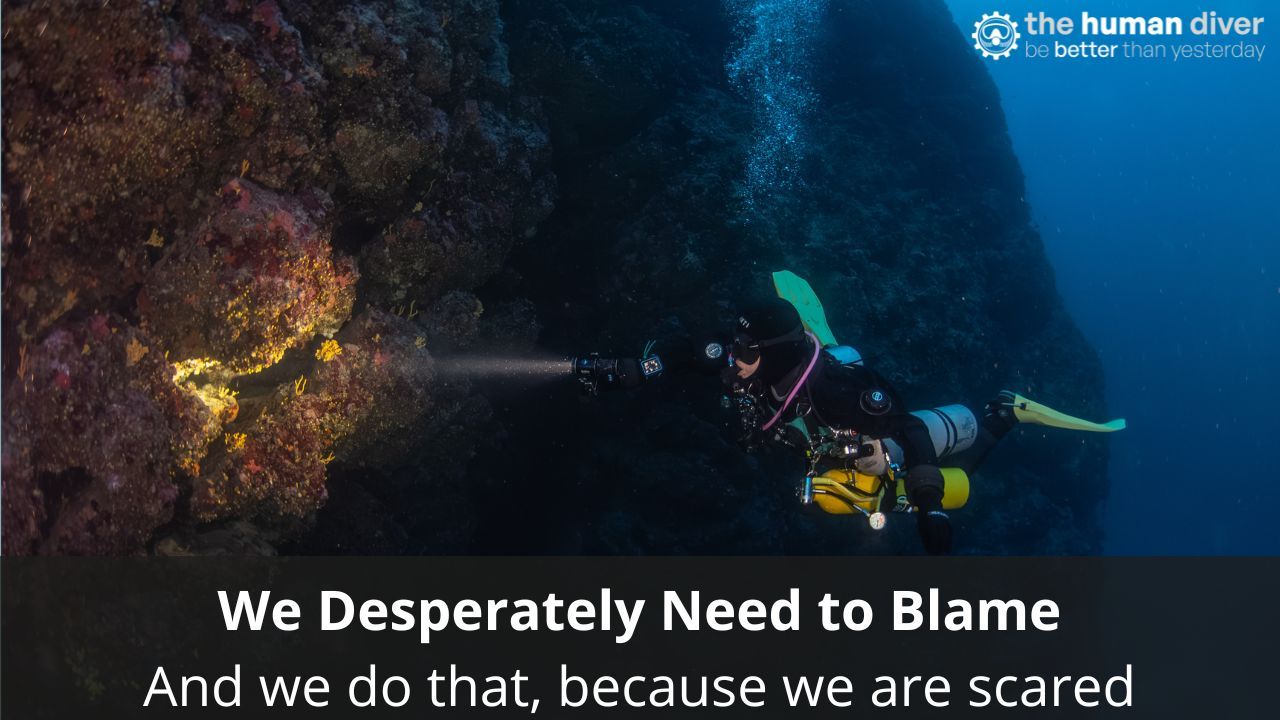
Top Tips for Technical Divers: Performance Influencing Factors - Even the best of us are only human
Oct 28, 2025Technical diving has a reputation for precision, discipline, and control. This manifests in rigorous gas planning, detailed equipment setup, thorough protocols. It’s easy to believe that once you’ve trained hard enough or bought the right kit, you can engineer risk out of the dive.
However, beneath all the checklists and redundancy, there’s still one unpredictable variable: us, the human.
I did a technical dive recently down to a wreck at 48m where, despite me going through my checklist before entering the water, I missed a step in it that I didn't even notice until I was well into my decompression an hour later! After the diving was done, the team talked about what I'd missed and the factors that contributed to a dip in my performance. While it is impossible to specifically narrow it down to a single factor, the following things were present:
- It was my boat. I was the skipper as well as a diver meaning some of my attention was elsewhere.
- My wife was on board as surface cover. I was concerned that she was happy with what was going on.
- It had been an early start and a 2 hour drive to the boat ramp. Possible fatigue?
- It was a public holiday. Parking the car and trailer at the ramp was very time consuming.
Performance Influencing Factors (PIFs) like these can make the difference between a well-executed dive and one that starts to unravel. They affect how we think, how we act, and importantly how we respond when things go wrong. And they don’t just impact the new diver or the weakest link in the team, they affect everyone.
What Are Performance Influencing Factors?
PIFs are the conditions that shape human performance for better or worse. This list could go on forever but to make the blog more digestible, I've narrowed it to five broad areas:
-
Physical: Fatigue, dehydration, thermal stress, illness, hunger.
-
Psychological: Anxiety, complacency, overconfidence, fear, time pressure.
-
Environmental: Temperature, current, visibility, noise, limited space.
-
Social: Team dynamics, authority gradients, peer pressure.
-
Task-related: Complexity, workload, novelty, time constraints.
In technical diving, these factors can stack up quickly. Deep, cold, dark, and complex environments push both the body and brain to their limits. You can have the best gear in the world, but if the human operating the gear is overloaded, cold, or stressed, that gear won’t save the dive.

Why PIFs Matter More in Tech Diving
Every decision in tech diving carries more weight. A small lapse in concentration during a gas switch, a rushed drill, or a skipped team check may cause more than inconvenience; it can become life-threatening.
The deeper or further you go, the smaller your margin for error and the greater the influence of seemingly small human factors. PIFs shape:
-
Decision-making (Do I continue or turn the dive?)
-
Situation awareness (Did I check that stage pressure?)
-
Team communication (Did they see my light signal?)
-
Problem-solving under stress.
Recognising when performance is being compromised isn’t a weakness; it is survival.
Top Tips to Manage PIFs in Technical Diving
1. Start With Self-Awareness
Before you analyse the plan, analyse yourself.
Ask:
-
How’s my sleep, hydration, and nutrition?
-
Am I stressed or distracted by life outside the dive?
-
Do I feel 100% mentally sharp, or am I just “pushing through”?
Self-awareness is your first defence. A fatigued diver might still perform the checklist but miss the meaning behind it or critical steps. If you’re off your game, say so. The best teams respect honesty more than bravado. Note that just because you are tired or have some external distractions, this doesn't mean you cannot dive. These things are part of normal life! At the same time, it might mean that the dive plan needs to be amended/simplified to reduce the potential risks.
Self-awareness is your first defence. It’s also one of the hardest to actually do well. Fatigue and stress blur perception, and we’re often the last to realise our own performance is slipping.
This is where teamwork comes in. Your team can often see what you can’t: slower reactions, hesitation, small errors that signal fatigue or distraction. I cannot overstate the importance of a culture that encourages others to speak up and be willing to listen.
2. Watch for Cognitive Load
Technical dives demand focus. Multiple gas mixes, lots of equipment, decompression obligations, etc, etc. These all add to our mental workload. Throw in cold, darkness and navigation challenges, and the brain quickly reaches saturation.
When that happens, Situation Awareness narrows. You start missing small cues: pressure readings, team signals, or subtle changes in buoyancy.
How can we fix this?
-
Keep tasks simple where possible.
-
Use clear team roles.
-
Practise drills until they’re automatic.
-
Don’t add new gear or techniques on a “serious” dive without rehearsal.

3. Manage the Physical Stressors
Fatigue, cold, and dehydration can quietly erode your performance long before you notice. Reaction times slow, fine motor control fades, and decision-making becomes sloppy.
Plan for physical resilience:
-
Stay fed and hydrated. Your brain performs better.
-
Dress for the dive, not for the surface.
-
Build in rest days for multi-day dive trips.
If you feel off, then as mentioned above, say something. It might mean cancelling the dive, but more likely, it will mean simplifying the dive to reduce the potential impact of PIFs if things don't go to plan.
4. Keep Ego and Pressure in Check
One of the biggest social PIFs in tech diving is ego.
Whether it’s the drive to keep up with more experienced teammates or to prove you can handle “just five more minutes,” ego kills clear thinking. Peer pressure and authority gradients can quietly override risk assessment.
Healthy teams talk openly about limits. They normalise calling a dive. They know that turning early is always a better story than being the subject of an accident report.
5. Consider The Environment
Every environment adds its own unique PIFs:
-
Cold water reduces dexterity and increases gas consumption. It also usually makes you stop enjoying what you're doing, which in turn reduces your motivation to keep focus.
-
Low visibility affects orientation and communication.
-
Overhead environments reduce exit options and increase cognitive stress, especially if problems start to ramp up.
Mitigate by controlling what you can:
-
Use line markers, consistent formations, and predictable light signals.
-
Practise drills in progressively harder conditions rather than jumping straight to extremes.
-
When new stressors combine (like current and darkness), shorten the dive and simplify the plan.

6. Build Margin for Human Error
No matter how good you are, you will make mistakes. The key is designing dives that absorb those errors.
Add margin:
-
More gas than minimums.
-
Conservative deco schedules.
-
Backup plans for lost gas or team separation.
-
Simple, clear signals rather than complex ones that depend on “perfect” conditions.
Planning for human error doesn’t make you soft or weak; it makes you resilient and professional.
7. Team Debrief With PIF Awareness
Most tech divers debrief the numbers: depth, time, gas use. Few debrief the humans.
Ask:
-
Who felt rushed or overloaded as we were getting kitted up?
-
How did people find focus or buoyancy?
-
Did we find the environment tougher than expected?
-
How did stress show up, and how did we handle it?
The answers to these questions will flow much better if the person running the debrief talks about their own examples. I.e. by stating something along the lines of how they 'needed more time before the dive to assemble and check their equipment, as they felt pretty rushed getting into the water'. This vulnerability is key to encouraging open conversations. This blog goes into some more detail on vulnerability.
It is vital to remember that these discussions aren’t blame sessions; they’re learning opportunities. The next dive will be smoother because of them.
PIFs Don’t Just Happen to Other People
It’s tempting to believe experience protects you from human factors. This is a myth. Complacency and familiarity are themselves powerful PIFs. Many high-profile incidents involve divers who, on paper, knew better. They just didn’t feel the risks creeping in (this is the normalisation of deviance and is just that, normal).
Every time you dive, check the human systems as carefully as the gas and gear. Because when a dive starts to go sideways, it’s rarely a single big mistake, and you'll almost always find a stack of small PIFs that nobody noticed....
Final Thoughts
Technical diving isn’t about eliminating risk; it’s about managing it intelligently. Gear and procedures handle part of that equation. Human performance handles a lot more, especially when things go wrong.
Understanding and appreciating Performance Influencing Factors helps give you the ability to predict when things might start to slide, and to act before they do.
So next time you’re gearing up, ask yourself:
-
Am I physically and mentally ready?
-
Is the plan appropriate for the conditions?
-
Does the team feel safe to speak up?
No matter how advanced the dive, humans will always be the most variable part of the system. The smart diver plans for that, and none of us is as smart as all of us.

Mike Mason is part of the Human Diver Team. Our mission is to give you the skills and knowledge so that you can be better than you were yesterday. If you'd like to deepen your diving experience, check out the youtube channel and consider taking the online introduction course which will change your attitude towards diving and make it better and safer. Alternatively, visit the website or start your journey into Human Factors in Diving with this introduction blog .
Want to learn more about this article or have questions? Contact us.









